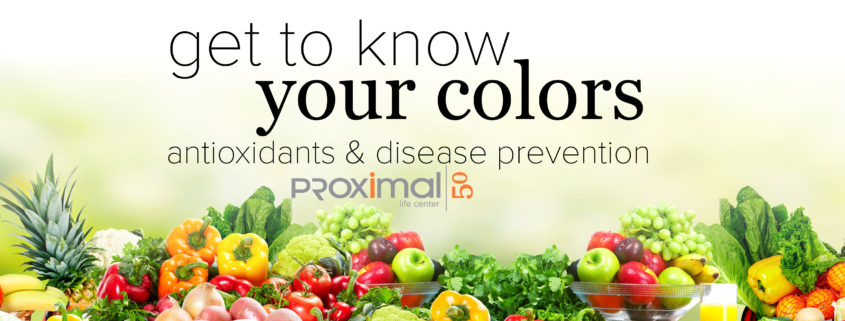Antioxidants: The Gold Mine of Disease Prevention
ARE YOU MISSING OUT?
The cells in the liver require a continuous supply of antioxidant nutrients to neutralize potentially damaging free radicals. (In short, if free radicals start to outnumber antioxidants oxidative stress starts to occur in the body. Oxidative stress is what can lead to disease. Want to know more? Go here. Or think about a car rusting… that’s oxidation!)
For the liver to naturally detox it needs vitamins C, E, B3 (niacin), and choline (a form of B vit.). The liver also needs the minerals copper, magnesium, zinc and essential fatty acids omega3 and 6 to do its job.
The body is amazing and does have ways of showing the buildup of toxins, but we aren’t always great at paying attention to those signs. Fatigue, digestive distress, mental fogginess, allergic tendencies, chronic inflammation and, most weight gain; are all signs that your body is under oxidative stress and needs more antioxidant support!
Taking it one step further, bile plays a significant role in the detoxification process. Most bile salts are reabsorbed and carried back to the liver. The remaining bile is carried to the large intestine where it is bound by fiber and excreted through poop (yes we said poop!) A diet lacking in fiber will slow that process and re-absorption of toxic compounds from the bowel can occur. Sounds gross doesn’t it? It also leads to a condition called leaky gut.
Antioxidants are most abundant in the different colors of veggies and fruit. But are also found in nuts and flaxseed.
Side note: One thing that drives me crazy is when we go to our local grill where you create your own dish and my husbands plate is beige!! I always say add some color think green (asparagus, broccoli, kale, Brussels sprouts, cabbage, cilantro), red (tomatoes), black (black beans), yellow (baby corn, zucchini, yellow squash, pinapple), purple (cranberries), and brown (mushrooms, garbanzo beans).
Here foods are grouped according to their predominant phytochemical group or color group. While research regarding color’s effect on health is ongoing and often opaque, here’s a general outline of where and why you need color in your daily diet!
BLUE/PURPLE
Behind the color: The blue/purple hues in foods are due primarily to their anthocyanin content. Anthocyanins are antioxidants that are particularly heart healthy and may help support healthy blood pressure.The anthocyanins that give these fruits their distinctive colors may help ward off heart disease by preventing clot formation. They may also help lower risk of cancer. Blueberries are considered to have the highest antioxidant activity of all foods.
Examples: Eggplant (especially the skin), blueberries, blackberries, prunes, plums, pomegranates
GREEN
Behind the color: The natural plant pigment chlorophyll colors green fruits and vegetables. In our system, the green foods represented those foods rich in isothiocyanates, which induce enzymes in the liver that assist the body in removing potentially carcinogenic compounds. Cruciferous veggies such as broccoli and cabbage contain the phytochemicals indoles and isothiocyanates, which may have anticancer properties.
Green vegetables are excellent sources of vitamin K, folic acid, potassium, as well as carotenoids and omega-3 fatty acids. Folic acid is needed to prevent neural tube defects during pregnancy, and vitamin K is essential in blood clot formation. Diets high in potassium are associated with lowering blood pressure, and there is an inverse relationship between cruciferous vegetables and cancer, especially colon and bladder cancers.”
Examples: Broccoli, cabbage, bok choy, Brussels sprouts
YELLOW/GREEN
Behind the color: A variation of the green color category, these foods exhibit a richness in lutein. Lutein is particularly beneficial for eye health. There are lutein receptors in the macula of the eye, and lutein helps protect against age-related macular degeneration.
Examples: Avocado, kiwifruit, spinach and other leafy greens, pistachios
RED
Behind the color: Lycopene is the predominant pigment in reddish fruits and veggies. A carotenoid, lycopene is a powerful antioxidant that has been associated with a reduced risk of some cancers, especially prostate cancer, and protection against heart attacks. Look for tomato-based products for the most concentrated source of this phytochemical. Tomatoes help support the health of prostate and breast tissue.
Red fruits and vegetables are also sources of flavonoids, which reduce inflammation and have antioxidant properties. Cranberries, another red fruit [whose color is due to anthocyanins, not lycopene], are also a good source of tannins, which prevent bacteria from attaching to cells.
Examples: Tomatoes and tomato products, watermelon, pink grapefruit, guava, cranberries
YELLOW/ORANGE
Behind the color: Beta-cryptoxanthin, beta-carotene, and alpha-carotene are all orange-friendly carotenoids and can be converted in the body to vitamin A, a nutrient integral for vision and immune function, as well as skin and bone health.
Other [phyto]chemicals typically found in yellow/orange fruits and vegetables protect our eyes from cataracts and have anti-inflammatory properties. They also help with blood sugar regulation. Beta-carotenes in some orange fruits and vegetables may also play a part in preventing cancer, particularly of the lung, esophagus, and stomach.
Examples: Carrots, mangos, cantaloupe, winter squash, sweet potatoes, pumpkins, apricots
Vanessa Lennick, RD, LRD
Registered Dietitian


